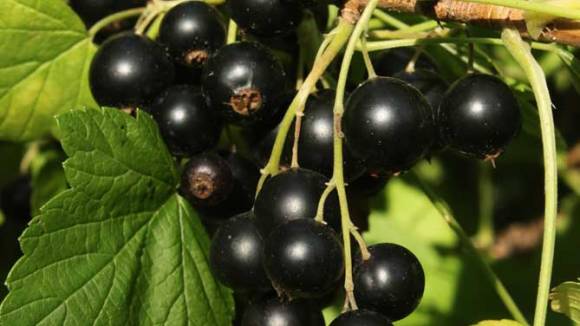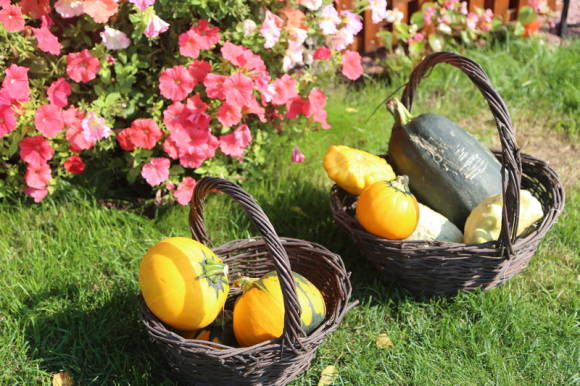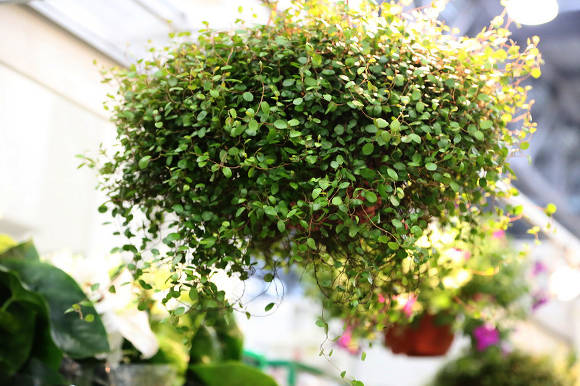 The crown of the tree resembles a mirror image of the root system. The roots play an important role in the life of the plant, through them the plant receives the necessary substances from the soil. Fallen leaves are decomposed by bacteria and reused for plant nutrition. This is how the circulation of substances in nature is carried out.
The crown of the tree resembles a mirror image of the root system. The roots play an important role in the life of the plant, through them the plant receives the necessary substances from the soil. Fallen leaves are decomposed by bacteria and reused for plant nutrition. This is how the circulation of substances in nature is carried out. Organic components serve as a buffer that retains moisture and nutrients, contribute to the active reproduction of colonies of soil microorganisms and make the soil alive - that is why organic fertilizers are always much more effective on the structure of the soil and the vital activity of plants than mineral fertilizers.

The humus content of the soil depends on the quality of the organic material. Sugar and starch are rapidly decomposed and do not produce humus. 2/3 to 3/4 of the shredded wood becomes humus. The structure of the soil depends on the activity of soil living organisms, the duration of periods of heat or cold, loosening, the presence of mechanical stress and exposure to rain. Only where there is organic matter, the soil remains "alive" and only in such a well-structured soil, plant roots penetrate deeply, and soil microorganisms receive enough moisture and air for full development.
Living things play an irreplaceable role in improving the structure of the soil - bacteria, fungi, actinomycetes, worms and other soil organisms. The optimal level of soil acidity for most plants is pH 5.5-7, outside of this range, the processes of assimilation of nutrients by plants slow down, and the efficiency of the use of fertilizers decreases, with the exception of certain groups of plants that require more acidic or alkaline soils.
For operational control of soil acidity, Ecostyle offers a special chemical acidity tester "pH Bodemtest", and for acidity regulation - granular lime with seaweed for lawns, flower beds and gardens of the AZ-kalk brand, containing a balanced mixture of microorganisms, in particular bacteria kind Azotobacter.
 |  |
For flowering plants, phosphorus is especially important, for fruit plants - potassium, for decorative deciduous plants - nitrogen. The difference in plant needs determines the composition of the fertilizer recommended by Ecostyle for each species.
 |  |  |
Chemical fertilizers are generally highly soluble. However, the introduction of solutions into the soil kills soil microorganisms, draws water from plants, promotes the accumulation of nitrates in fruits, pollutes the environment, makes plants "lazy", and in excessive concentration causes burns. With the use of chemical fertilizers alone, the colonies of soil bacteria and fungi around the root system of plants gradually degrade, while organic fertilizers, promoting the reproduction of beneficial bacteria, stimulate the development of the root system.
Plant nutrition is impossible without soil microorganisms; in addition, they produce biologically active substances that protect plants from diseases and contribute to the preservation of their health.

Phizobium bacteria live in symbiosis with legumes and fix nitrogen from the air, making it available to plants. They belong to the group of symbiotic nitrogen fixers. There are about 190 species of higher plants of different families capable of assimilating nitrogen with the help of symbiotic microorganisms - bacteria of the genus Rhizobium, some actinomycetes and cyanobacteria (blue-green algae). These bacteria penetrate the root hairs of plants, spread in the cells of the integument of the roots and cause active division of infected cells with the formation of nodules on the roots. The bacteria themselves increase in size tenfold, turning into bacteroids, which effectively fix nitrogen in the air. So, on crops of legumes - peas, beans, beans, lupine, clover - they produce 100-400 kg of nitrogen per hectare.

Bacteria of the genus Azotobacter are also capable of fixing nitrogen, but they do not enter into symbiotic relationships with plants, but remain in a free-living state. Settling on the surface of the roots of higher plants, they use the root excretions of plants as a source of carbon. Unlike the anaerobic bacteria Rhizobium, which can work in uncultivated soils, Azotobacter is an aerobic microorganism and lives on cultivated, breathable soils. That is why its introduction contributes to the reclamation of poor quality lands.
Representatives of a special kingdom that combines the properties of bacteria and fungi - Actinomycetes, whose concentration is especially high in forest soils, also live in symbiosis with plants, fix nitrogen from the air and produce antibiotics (for example, streptomycin) that protect plants. They live on the roots of some trees and shrubs - sea buckthorn, alder, sucker and other crops.

Some plants enter into symbiosis with soil fungi that form mycorrhiza - for example, heathers, erika, rhododendrons, junipers. The fungal hyphae closely entwine the roots and provide them with the availability of nutrients from organic debris, converting cellulose into lignin. These fungi also fix nitrogen in the air and are capable of producing antibiotics. There is another type of symbiotic relationship of a plant with fungi - endomycorrhiza, when the simplest fungi penetrate the root cells and are gradually digested by them. Thanks to these mushrooms, heather and some other plants have acquired the ability to grow in acidic soils.
Bacteria protect plant cells by recycling excess fertilizer. Beneficial microorganisms surround the roots, have a fungicidal and bactericidal effect due to the antibiotics they release - they are indispensable for the rapid growth and health of plants. Therefore, Ecostyle fertilizers, containing the necessary types of soil bacteria and fungi, not only introduce organic matter into the soil and provide plants with adequate nutrition, but also actively contribute to the development of plants and increase their resistance to diseases. These fertilizers, unlike mineral fertilizers, are not washed out of the soil with water; they can be applied even in late autumn. They allow to restore the microbiological balance of the soil after the introduction of pesticides into it, which destroy not only pathogenic, but also beneficial organisms.
One of the oldest products of Ecostal, widely used in Europe, is a specialized organic fertilizer for lawns, Gazon-AZ, which provides 100% of the lawn with nutrition and contains the necessary spectrum of soil bacteria and fungi (including mycorrhizal fungi) due to which the ability of the root system of the lawn to absorb moisture and nutrients from the soil is increased by 10 times.As a result, the lawn acquires exceptional drought tolerance, which was once again confirmed by the successful testing of this fertilizer during the heat wave of 2010. The bacterial composition of the "Gazon-Azet" fertilizer also helps to suppress the development of moss due to the ability of microorganisms to actively resist its development.
Microbiological organic fertilizers with nitrogen-fixing bacteria have found wide application for the restoration of lawns and grass cover of sports and golf courses, they allow to reanimate lifeless soils. Testing in Holland showed that after 2 years of using this fertilizer, the quality and structure of the soil significantly improved, the acid balance was adjusted, the good condition of the root system and the aboveground part of the lawn grasses, the abundant development of mycorrhiza were noted. For 4 years, the content of the main mineral elements in the soil has increased many times, and in the spring the lawn revives and turns green 2-3 weeks earlier.
 |  |

Another unique product of the Ecostyle company is the microbiological soil activator Terra Fertiel, the granules of which contain a wide range of soil fungi and bacteria. The drug restores natural microbiological activity in soils, the products of which are one of the main sources of nutrition and plant protection. The Terra Fertiel activator is indispensable for the regeneration and increase of soil fertility, for planting seedlings (including large-sized plants), for laying and renovating gardens, for treating lawns, football fields and golf courses. With the use of the activator, reclamation of the poorest lands is achieved within two years.
The use of "Terra Fertiel" reduces the percentage of death of seedlings at times, providing plants with the maximum possible survival rate by stimulating the development of the root system and protecting them from diseases. Landscape designers in Europe and Russia confirm that the percentage of plant death after the completion of a project using Terra Fertiel was always several times lower than without it, which allowed them to give long-term guarantees for the result of their work and, ultimately, reduce the cost works.
The positive effect of using the Terra Fertiel activator when planting plants is provided by the microorganisms included in its composition, which protect the plants from stress during transplantation - usually the growth of plants after they are planted in the ground stops for a while and some of the seedlings die. Terra Fertiel ensures the maximum possible survival rate of plants, helping them to cope with stress, stimulating the rapid development of their root system.
The activator is applied once a year, then the need for its introduction is determined depending on the assessments of the state of the soil and plant health. The possibility of a single application of Ecostyle fertilizers is an additional convenience that allows you to save on labor costs.
Soil bacteria and fungi that make up the Ecostyle products are in a dormant form, tolerate long-term storage and low temperatures without any problems, and are easily activated when introduced into the soil.
The entire line of Ecostyle products can be found on the website of the Ecobiotica company //www.ecobiotica.ru/.









